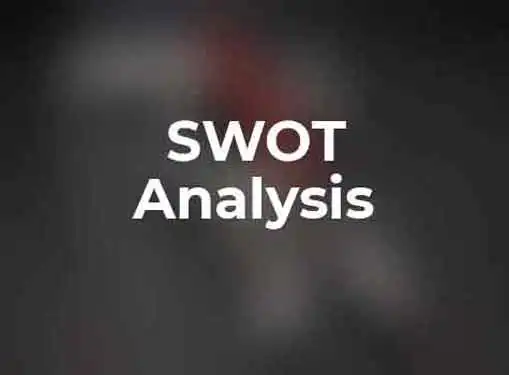Small Business Marketing
SWOT Analysis
Written by Clayton Reeves for Gaebler Ventures
SWOT is a simple tool, but for small businesses it can help focus efforts in a way that increases productivity and growth. A company without direction is headed nowhere, so even simple tools such as SWOT can help your company grow.
"Like a product or service, the planning process itself must be managed and shaped, if it is to serve executives as a vehicle for strategic decision making," wrote Robert Lenz.

SWOT analysis is a way to help you realize where your firm stands compared to your competition.
It takes four factors (strengths, weaknesses, opportunities and threats) and combines them in such a way that your firm can create a direction. Without an objective for the SWOT analysis, the process does not reveal much. The firm must decide why a SWOT analysis is necessary and what it will be used for. A TOWS analysis is another tool that can be used with these factors.
First, strengths/weaknesses are internal and should be determined with an internal analysis. They are controlled explicitly by your company and the workers there. External factors include opportunities and threats. Opportunities are those projects or chances for value adding business operations. Threats usually come from competition in the form of substitute items or services. SWOT can be applied to the business as a whole or simply a project. The problem with project analysis is that it is difficult to apply companywide attributes to a single project that may only utilize a fraction of the firm's resources.
Start with the internal and external analysis. From there, perform a SWOT analysis by creating a grid, and matching each of the factors to one another.
Strengths that match up with opportunities can create competitive advantages for your firm. Weaknesses that match up with threats must be dealt with immediately to mitigate the potential losses from that mismatch. This strategy is called matching.
Another strategy to employ is the conversion strategy. Converting weaknesses to strengths and threats to opportunities certainly sounds like a great strategy. However, in practice it is often difficult if not impossible to do. Minimizing or avoiding threats and weaknesses is generally accepted as a more realistic approach to SWOT results.
There are several things to know about the use of SWOT. First, it is not an end all, be all strategic planning formula. Without the proper analysis SWOT can induce tunnel vision and ignore what should be obvious risks. Also, using SWOT for the entire business can ignore potential project specific risks.
When he's not playing racquetball or studying for a class, Clayton Reeves enjoys writing articles about entrepreneurship. He is currently an MBA student at the University of Missouri with a concentration in Economics and Finance.
Share this article
Additional Resources for Entrepreneurs

Conversation Board
Give us your thoughts on how to conduct a SWOT analysis. We welcome your comments, tips and advice below. Thanks!